Spring Into Gardening Tips - How to Plan a Garden for All Seasons
First and foremost -- big thank you’s are in order: Many thanks to the Atlantic Highlands Historical Society (AHHS) / Strauss Museum for inviting me to speak at their incredible cultural institution to talk about how to get your gardens geared up for the season. The two Lynn(s) - one with an “e” prepared a soiree brimming with mocktails and food treats, including scones and petit bourbon iced cupcakes - and cookies - and Mother’s chocolates - all worthy of any Victorian ladies parlor afternoon. But with much more cool.
The hostess tables were laden with three different refreshments I suggested we offer to the guests - employing a modified twist on the recipes to create our unique version of:
- Arnold Palmer - lemonade and iced tea
- Bees Knees - Lemon juice/lemonade, honey simple syrup, lemongrass simple syrup
- French 75 - A mix of sparkling water, elderflower simple syrup, fresh-squeezed lemon juice
| Mother and her handmade chocolates she shared with the event guests. Thank you. So sweet... |
I was honored to be able to share my many years of experience designing edible and ornamental gardens, and horticulture “Best Practices.”
I emphasized my artful pursuit to have every garden tell a story - your own, unique story. That “story” is your special narrative - reflecting your own lifestyle and dreams - and is what I believe makes gardens so intimate, personal, and ultimately, beguiling.
In telling that story, I promote creating garden rooms, using Native Plants, Water-Wise plants, Right Plant for the Right Space, the importance of good soil (!) and how to test your soil, and the design process.
Some examples of garden stories include:
- Cultural Heritage/Historical/Travel Memories
- European, Mediterranean, Asian, Native American, Victorian
- Edible / Ornamental
- Romantic Gardens
- Cottage Gardens
- Contemporary & Mid Century
- Eco-Friendly - Wildlife, Organic, Sustainable, Xeriscape
- Rustic
- Formal
- “Natural” or “Gardenless” (Think Capability Brown)
Not surprisingly, you need a Plan. This may seem obvious but really, how many of us have simply gone to the garden center or nursery and just been so very seduced by the sheer beauty of the blooms and plants that we load up the car and head home?. I speak from experience.
I joked with the guests that before I earned my Certificate of Landscape Design at The New York Botanical Garden, I’d visit the local nurseries, reveling in the heightened sensuality - (the sight, smell, texture…) especially in the greenhouses --and proceeded to load up the cart with the plants that stole my heart. Upon arriving home, my husband would appeal to my common sense (vs. my aesthetic senses :) and ask me (sounded like pleading, as I recall) - “Where are you going to put all of that??
Soon enough, I was taking garden design classes. And long story short - my life changed. From corporate corner office to the garden “room.”
I tell folks it’s imperative to start with Research to get to your Garden Plan.
Look for inspiration from any number of resources: Shelter Magazines - Print & online,
Museums, Fine Art,
| Years ago I used this Monet painting as inspiration to frame a client's water view - (see next image) |
| See how the pool garden beds help frame the water & NYC Skyline view? |
streetscapes:
Plan to visit as many public gardens and parks as you can; utilize the Garden Conservancy’s signature program: the Open Days; Botanical Gardens, design and garden shows, including the Macy’s Flower Show or the Architectural Digest Show, for example. Take Classes - I shared the good news with the guests that NYBG’s Adult Education is offering a $50 premium plus All Access Garden Passes for the three Intensive programs that kick off July 8. And that offer is good for you, my dear readers. (More on this in a post all it’s own. But don’t wait -- visit the NYBG Education website and choose your Intensive classes in Floral Design, Gardening, or Landscape Design. Just Comment here at the blog or on social media.)
For more inspiration, I suggested you join horticultural groups and associations - and to support their efforts. Besides the Conservancy, there is the American Horticultural Society, Xerces Society, The Horticultural Society of New York, to name just a few. You can also become a member of the botanic gardens. In addition to all the great programming, you can travel with the organization, get their magazines and newsletters. A wealth of information, entertainment, camaraderie, and bonhomie.
With lots and lots of images, links to suggested resources and nurseries, tip lists, and handouts of Native and Invasive Non-Indigenous Plant Species, catalogs for seeds, planters, (especially Pennoyer and Newman), and a new DEET-free, unscented mosquito pest repellant that I’m testing and recommend from maker, earthkind.
The garden design should embrace not just good looks but also an effort to create a garden in harmony with Nature. It’s not “just” beauty…
Learn to ask more of Landscape; Gardens are key to survival; Gardens support Life and Sequester Carbon. Gardens feed pollinators and help manage water.
I offered these tips for Eco-Friendly Gardening:
- Pursue Organic Gardening Practices
- Utilize Companion Planting
- No Chemicals
- Utilize Solar Lights vs. Electrical only lighting for many spots in the garden
- Install Permeable Driveway
- Use Rain Water Barrels - attach to downspouts
- Compost - Garden Debris & Food Scraps Create Organic Soil -- add worms for Vermiculture
- Opt in for Natural Swimming Pools - Plants Clean the Water - no chemicals or hybrids
- Mitigate Water-Guzzling Turf areas of yard
For example:
- Dill and basil planted among tomatoes can protect from tomato hornworms.
- Marigolds are as good as gold when grown with just about any garden plant, repelling nematodes which attack vegetable roots, especially tomatoes
- Nasturtiums are aphids magnets - the devastating aphids flock to them instead of other plants
- The Iroquois revered the Three Sisters planting: corn, beans, squash as special gifts from Great Spirit.
- Blueberry with Pine & Oak trees
- Melons with radishes, pumpkin, sunflower
- Nasturtiums deter bugs, beetles
- Oregano offers general pest protection
- Marigold deters beetle
- Grapes with basil, beans, hyssop
- Delphiniums attract Japanese beetles, then kills them with wicked foliage!
I talked about why Native Plants are so important with just a few reasons to go Native!
Natives support a SUSTAINABLE Landscape - one that is stronger against storms, a sustainable landscape can ahem, weather more aggressive climates.
A more diverse & unique garden Plant Palette (Not your gas station composition!) offers a more challenging green inventory -- I pointed out how plants, too, have a history and a story and it’s fun and impactful to use those narratives in your garden.
Just think that at one point, every locale or region had its own natural soda that was made from the local plants, such as sarsaparilla, root beer, ginger, citrus, and Maine’s gentian root, Moxie.
I noted that Invasives were once Exotics. Moreover, these imports remain alien species whose introduction does or is likely to cause economic or environmental harm or harm to human health because they can readily “out-compete” the Natives. It’s an unfair fight. We can help remedy the “sins” of the past. A good start is the Brooklyn Botanic Garden’s, Native Alternatives to Invasive Plants which was published while I was Director of BBG’s Communication. I passed around a copy of the book so guests could see how readily gardeners can swap out an exotic for a Native plant.
I provided a few examples of Native Plants:
- Blueberries (Vaccinium spp.)
- New Jersey tea (Ceanothus americanus)
- Paw paw (Asimina triloba)
- Asters (Aster/Symphyotrichon spp.)
- Beardtongue (Penstemon spp.)
- Milkweeds (Asclepias spp.)
- Turtlehead, white (Chelone glabra)
- Violets (Viola spp.)
And where to shop for Natives local to the area, including:

What we do wrong: over-fertilize or fertilize without a purpose, over-sanitize (by removing leaves, etc.), create mulch mounds, drive heavy equipment up to the base of trees, and garden in the rain
I pointed out that Soils are Alive: Healthy Soils: 45% mineral matter, 5% organic matter, 25% air and 25% water. Soil organisms and plant roots need both oxygen and water to thrive.
Soil can be evaluated on fertility and texture. Fertility is a measurement of essential nutrients: nitrogen, phosphorus, potassium.
I provided a bit of background: Soil was formed from rocks breaking down through a process of freezing and thawing; temperature, and time.
Add plants into the equation and you have organic matter - plants decomposing and breaking down to form humic acid. Think about this: It takes 500 to 1000 years to build an inch of soil.
Yet, when contractors remove topsoil to build – they essentially remove all the nutrients that plants need to grow; destroying the soil texture as they go.
Leaves add a natural layer of mulch that will be broken down over the course of the year and transformed into organic matter which feeds the soil and its micro-organisms. I encouraged them to avoid the annual gas-guzzling blowers that remove every single. leaf. from a yard. Where did this concept come from? That annoying buzzing has become an unwanted rite of Autumn, sadly. As I raked the leaves onto my garden beds - the cacophony of the competing blowers was deafening. Plus, I shook my head when I thought the homeowners are paying for the removal, then paying to bring in mulch...
Also, protecting your garden soil is the number one reason to delay planting vegetables until the rain ends and the soil dries. ... The natural pockets, or pores, between soil particles are crucial to healthy plant growth. Digging in wet soil -- or even walking on it -- compacts those pores.
I showed how to test your soil.
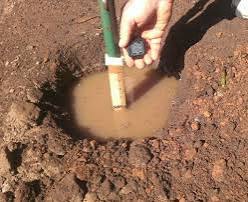
- Brock Farms
- Cicconi Farms
- Coastal Nursery
- In The Garden
- Pleasant Run Nursery
- Rare Find Nursery
- Linwyck Gardens
- Sickles
- Statile (wholesale only)
- Toadshade Wildflower Farm
What we do wrong: over-fertilize or fertilize without a purpose, over-sanitize (by removing leaves, etc.), create mulch mounds, drive heavy equipment up to the base of trees, and garden in the rain
I pointed out that Soils are Alive: Healthy Soils: 45% mineral matter, 5% organic matter, 25% air and 25% water. Soil organisms and plant roots need both oxygen and water to thrive.
Soil can be evaluated on fertility and texture. Fertility is a measurement of essential nutrients: nitrogen, phosphorus, potassium.
I provided a bit of background: Soil was formed from rocks breaking down through a process of freezing and thawing; temperature, and time.
Add plants into the equation and you have organic matter - plants decomposing and breaking down to form humic acid. Think about this: It takes 500 to 1000 years to build an inch of soil.
Yet, when contractors remove topsoil to build – they essentially remove all the nutrients that plants need to grow; destroying the soil texture as they go.
Leaves add a natural layer of mulch that will be broken down over the course of the year and transformed into organic matter which feeds the soil and its micro-organisms. I encouraged them to avoid the annual gas-guzzling blowers that remove every single. leaf. from a yard. Where did this concept come from? That annoying buzzing has become an unwanted rite of Autumn, sadly. As I raked the leaves onto my garden beds - the cacophony of the competing blowers was deafening. Plus, I shook my head when I thought the homeowners are paying for the removal, then paying to bring in mulch...
Also, protecting your garden soil is the number one reason to delay planting vegetables until the rain ends and the soil dries. ... The natural pockets, or pores, between soil particles are crucial to healthy plant growth. Digging in wet soil -- or even walking on it -- compacts those pores.
I showed how to test your soil.
There are four different ways to test the soil: Squeeze, Drainage, Glass Jar, and send samples to your local Cooperative. A full report is returned rather quickly.
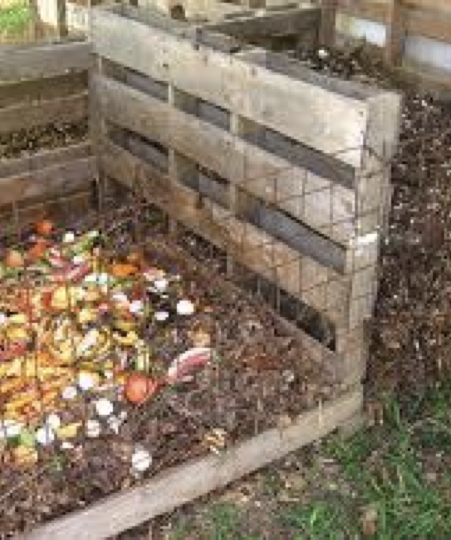
To create compost, simply combine these ingredients in any container that works for you, including a DIY bin, a portable turning bin, one a stone-enclosed one. Make it work for your lifestyle and the overall garden design.
Mix:
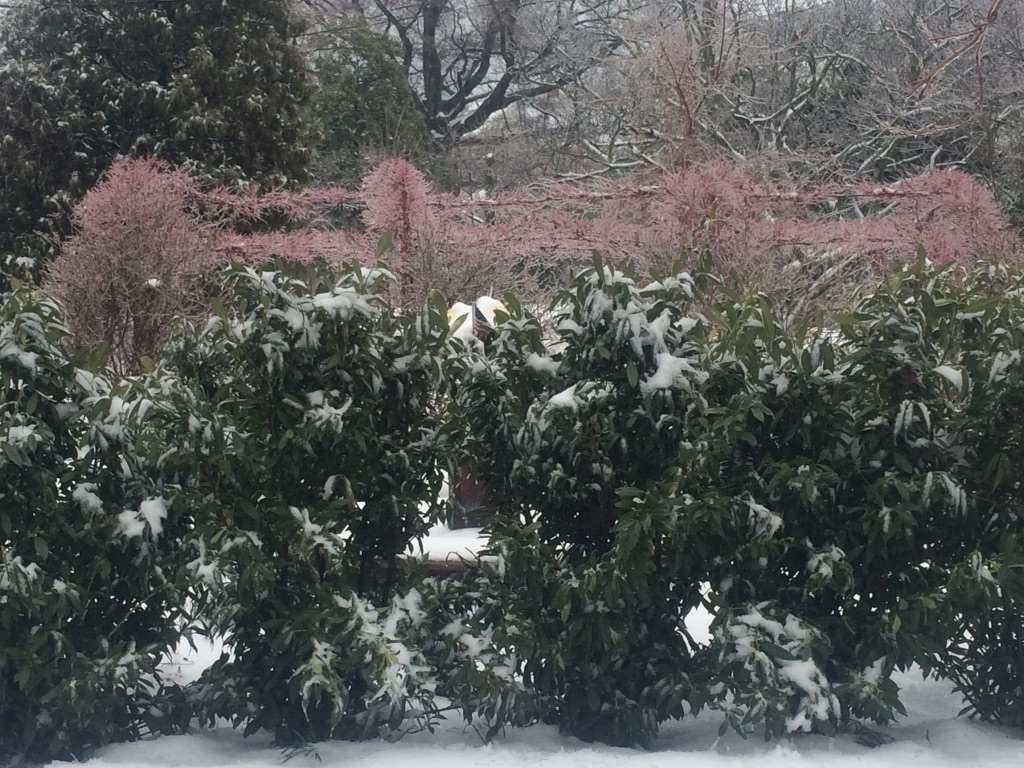



Be realistic with regard to maintenance -- will you take care of the garden. Yes, you can have a low maintenance garden. You cannot have a no-maintenance one. The plants are alive!
And “landscapers” aka “mow, blow, and go” lawn folks are, for the most part, -not horticulturists. That means they don’t know when and how to prune for the life of the plants; they don’t weed nor plant properly (cages on trees, perennials “stuck” in the ground), and mulch volcanoes that go right up to the tree trunks, furthering heat and pathogens and destruction. Be cautious when asking them to do something they are not trained to do.
Think about your garden’s Irrigation - and alternative resources for low & moderate water use plants, including Drip and the use of Rain Barrels and brown water.
Next, you should perform a Site Analysis:
You can create a bubble diagram to note:



Step three when creating the Garden Plan is to determine your Garden Rooms. Bear in mind it’s exterior design - geared to your lifestyle, so think of these kinds of garden rooms:
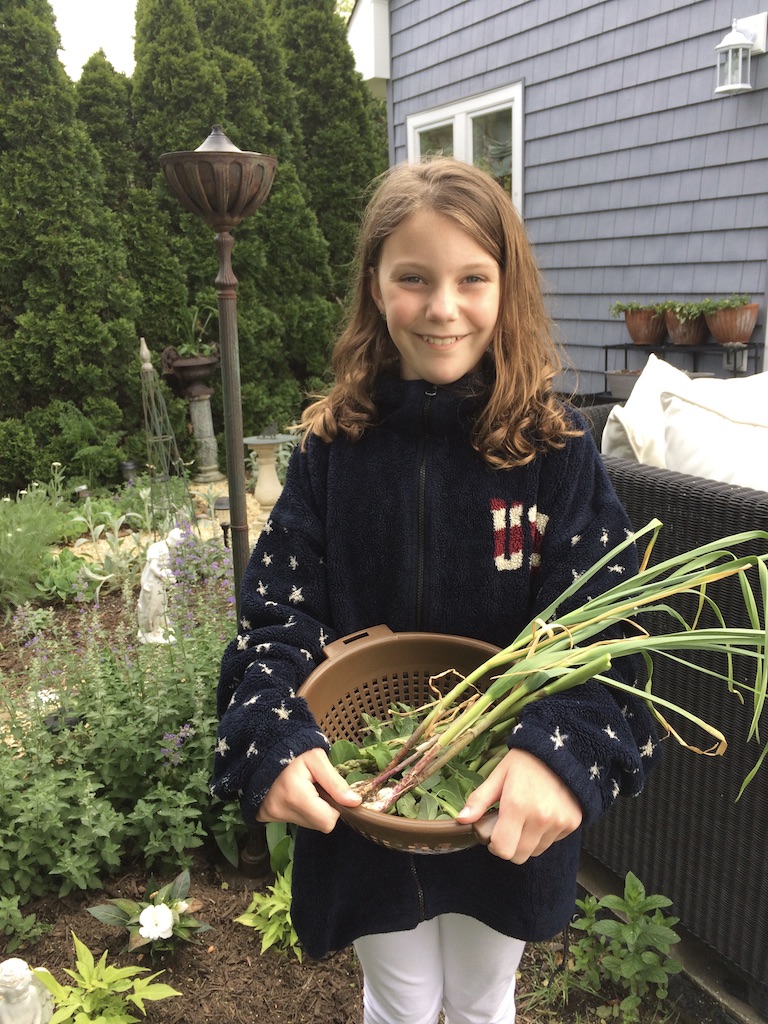

- The squeeze test helps to identify the soil texture.
- The drainage test helps to identify the composition of soil and its draining capacity and its ability to hold water.
- The pH test helps to identify the concentration of hydrogen in the soil, determines the acidity & alkalinity of the soil
To create compost, simply combine these ingredients in any container that works for you, including a DIY bin, a portable turning bin, one a stone-enclosed one. Make it work for your lifestyle and the overall garden design.
Mix:
- Lawn clippings
- Dead/harvested garden plants
- Shrub clippings
- Kitchen extras: coffee ground, vegetables, fruit peels
- Cardboard/newspaper – shredded
- Leaves
- Determine what kind(s) of gardens/garden rooms
- Create All-Season Garden and a Staggered Planting Plan
- Develop a winter aesthetic. Here, I showed images of colorful and interesting gardens to highlight winter bark interest and seed heads and more..
Be realistic with regard to maintenance -- will you take care of the garden. Yes, you can have a low maintenance garden. You cannot have a no-maintenance one. The plants are alive!
And “landscapers” aka “mow, blow, and go” lawn folks are, for the most part, -not horticulturists. That means they don’t know when and how to prune for the life of the plants; they don’t weed nor plant properly (cages on trees, perennials “stuck” in the ground), and mulch volcanoes that go right up to the tree trunks, furthering heat and pathogens and destruction. Be cautious when asking them to do something they are not trained to do.
Think about your garden’s Irrigation - and alternative resources for low & moderate water use plants, including Drip and the use of Rain Barrels and brown water.
Next, you should perform a Site Analysis:
| Bubble Diagram Site Analysis |
- Footprint ~ Start with the basic dimensions & shape of your property
- Existing Features ~ Make a list of what is already on your property: buildings, trees, hardscapes, fences & infrastructure
- Topography
- Hydrozones ~ Observe water flow & drainage patterns
- Soil ~ Conduct soil test for type & pH
- Site Lines & Views ~ From inside your home
- Hazards; Nuisances; & What’s Below
- Climate ~ Note Sun; Shade; Wind; Planting Zone
| Example of Site Analysis |
Step three when creating the Garden Plan is to determine your Garden Rooms. Bear in mind it’s exterior design - geared to your lifestyle, so think of these kinds of garden rooms:
- Living Room
- Kitchen & BBQ - smokers, wine coolers, refrigerators, and more
- Shower and/or Spa (hot tub, sauna)
- Children’s Garden Room with Textured, Colorful, Scented Plants, Herbs; Scaled for “Budding Botanists”
Water Garden 
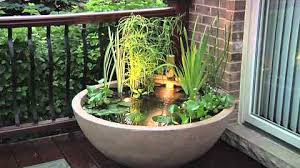 Pond, Fountain, Container or Bowl
Pond, Fountain, Container or Bowl
Rock Garden
Evening/Moon Gardens
Welcome/Entrance
Herbal/Physic
Orchard
Container and/or Raised Beds
Consider the view from inside the house when planning your gardens.
Also, utilize what we call the “Borrowed Landscape” to draw your eye.
Further, I talked about the Elements of Good Garden Design. Here’s a few points to consider:
- Line - Curved, Straight, Horizontal, Vertical. Lines Lead the Eye. Nature Leads with a Curve
- Light - Play Up the Light and Shadows
- Add Solar or Electrical Lighting for Dramatic Backlighting Effect & Safety
- Texture - Tactile & Visual
- Mix Course, Medium, Fine ~ Plants & Hardscapes
- Combine Frilly, Smooth, Prickly, Feathery to Achieve Repetition/Unity/Contrast/Balance
- Form & Shape - Create “Walls” to Divide Space, Enclosure, Architectural Interest
- Scale & Pattern
- Variety - Combine different Plants
- Color!
Are you a cool color fan? Or does your garden style run hot? I like to mix one side with the other - blues with yellow and purple with orange, for example.
Contrast happens when you manipulate various elements such as form, texture, and color - Create a “tension.” Rhythm & Repetition avoids monotony
Create Unity and Harmony by keeping the garden “ingredients” refined, simple to make a sense of completeness.
Balance is achieved with Symmetrical or Asymmetrical design element, playing off a central axis which can be a door, a tree, or a body of water
Scale and pattern creates charm. Repeat shapes in order - this can direct visitors through the garden and reinforces texture and contrast.
Create a scaled mix of Trees, Shrubs, Perennials
Determine Pathways/Walkways to Move thru Garden Rooms/Yard
Balance the Evergreen to Seasonal Mix of plant material
Containers add Style
Containers are functional in some places (rooftop, patio, porch) - plus they add a pop of color and structure.
Welcome Home/Seasonal and Holiday Door Decor is a first impression for you and guests to your home. Make it work for you...
Produce your Plant Wish List based on a few guiding principles:
- Right Plant / Right Place
- Confirm Plants Work For Your Zone
- Determine Sun/Shade
- Determine Water Needs
- Consider Color/Texture/Height
- Mix Ornamental with Edible - Foodscaping
- Seek Plant Companions
- Utilize Natives
- Add Fragrant Plants
- Consider Bloom Schedule
- Look for Long-Blooming Plants
- Create Mix of Evergreen, Trees, Shrubs, Perennials, Annuals
Shop the catalogs in winter; plant your seeds indoors in late winter/early spring:
A few tips on Horticulture Best Practices and garden maintenance include:
- Prune after seasonal bloom = Trees & Woody Shrubs
- Cut back Ornamental grasses in late winter/early spring
- Plant spring bulbs in autumn - add cayenne pepper to the planting hole
- Start seed planting inside/ under lights March
- Plant Peas ~ St.Patricks Day / Plant Annuals after Mother’s Day
- Mulch Appropriately
- Weed early winter/ early spring
- Clean tools after each session
| Irene Varig's Monthly In the Garden To-Dos |
Then, on to the design dynamics that add the style to your exterior rooms, including lighting. I’ve designed lighting street lamps and had them fabricated:
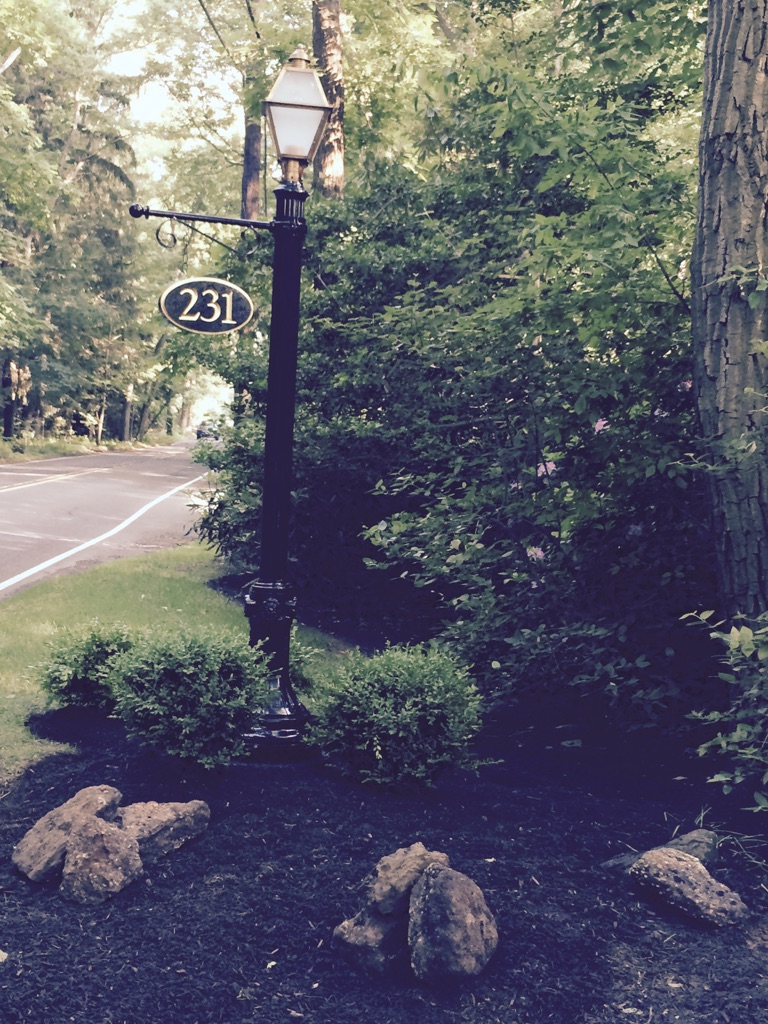 to soft, solar lighting installed along a path or in a garden bed, solar powered lights to add romance and glamour to the arbor
to soft, solar lighting installed along a path or in a garden bed, solar powered lights to add romance and glamour to the arbor  Here, I used antique ship lights, re-purposed as attractive step lighting -using battery operated timers:
Here, I used antique ship lights, re-purposed as attractive step lighting -using battery operated timers: 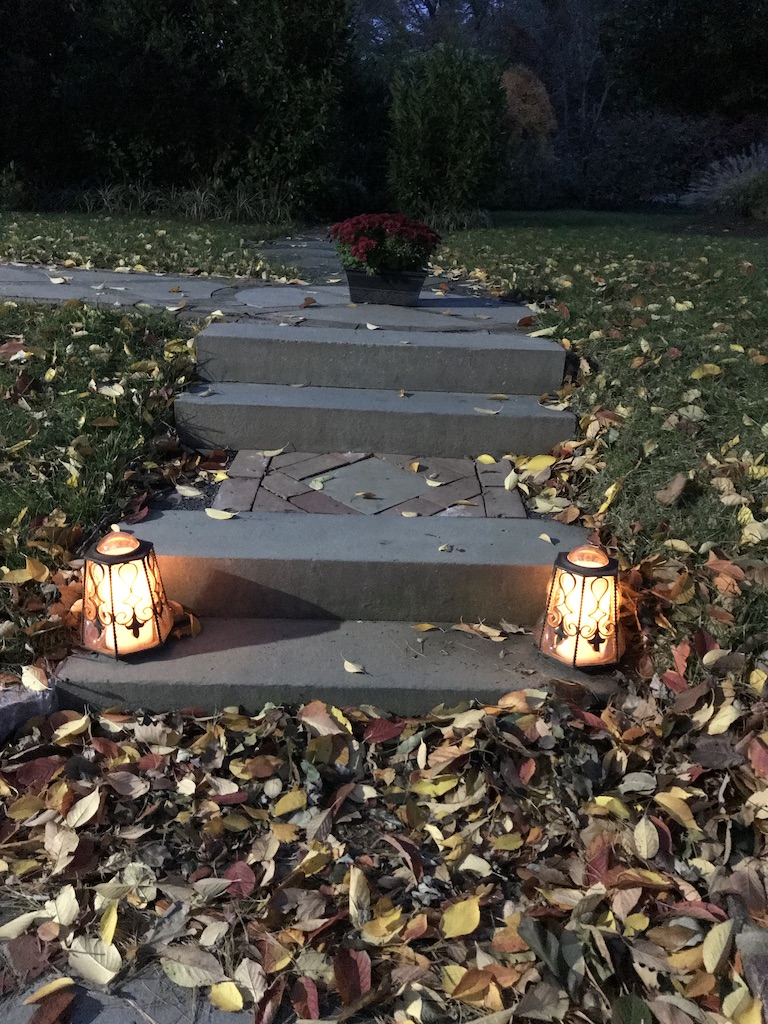 - along with fire and positioning some garden room to best enjoy the arc of the moon…
- along with fire and positioning some garden room to best enjoy the arc of the moon…
How to feed the plants with H20 can be accomplished in myriad ways.
Watering Tips:
Befores:
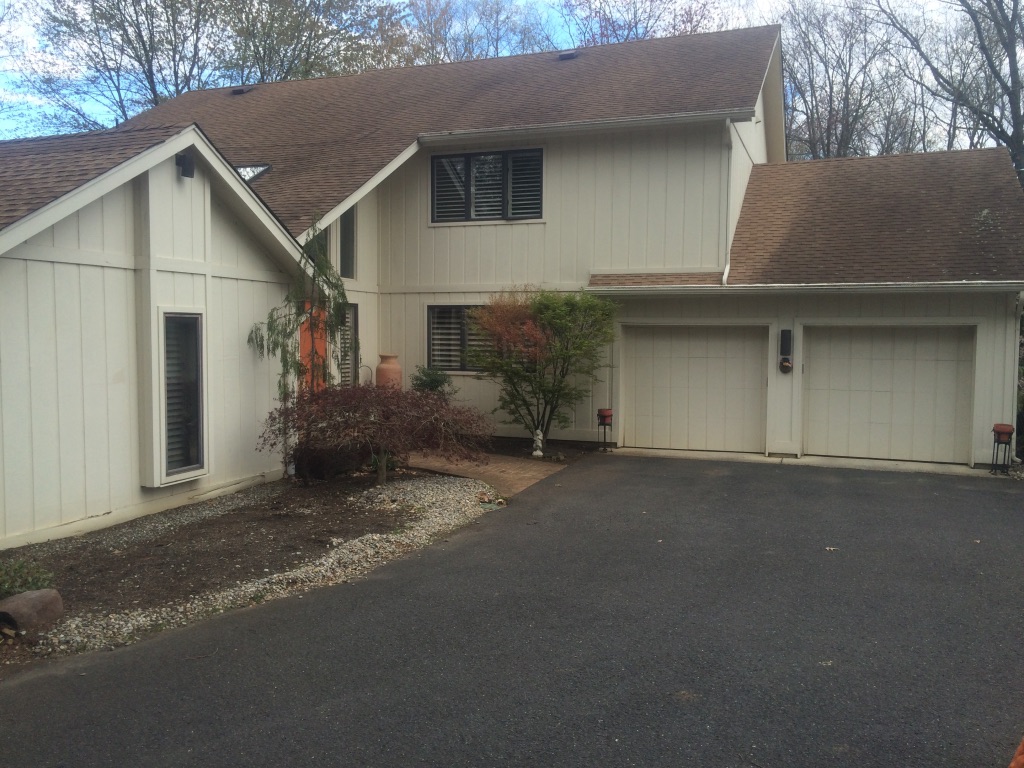
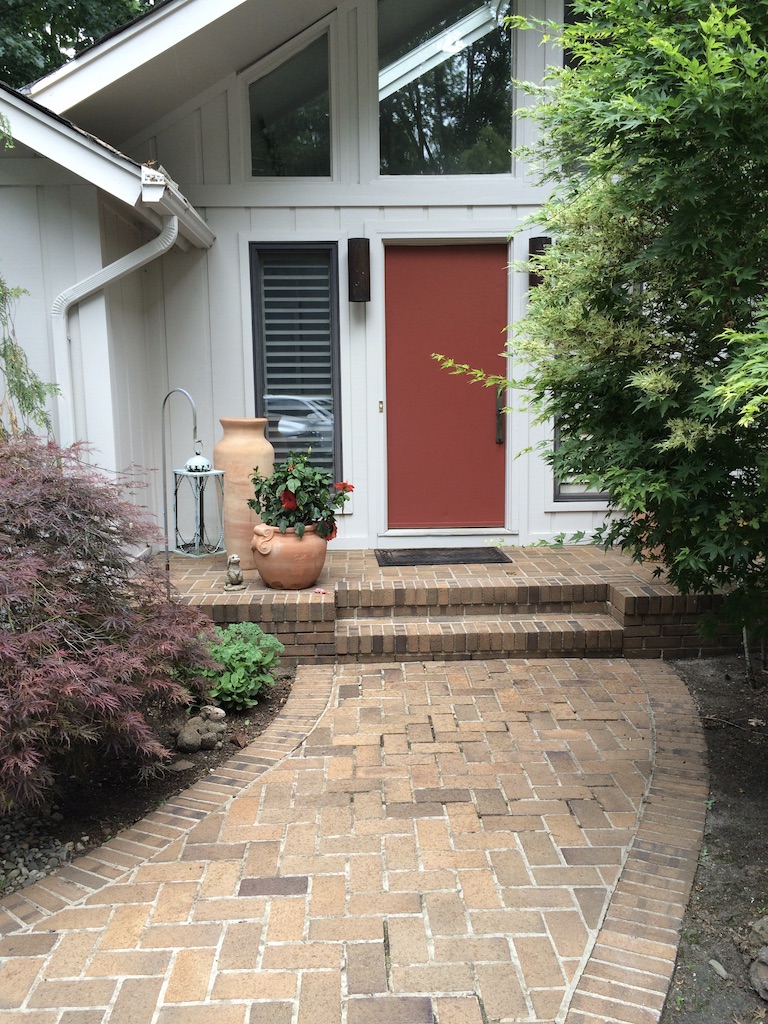
After:
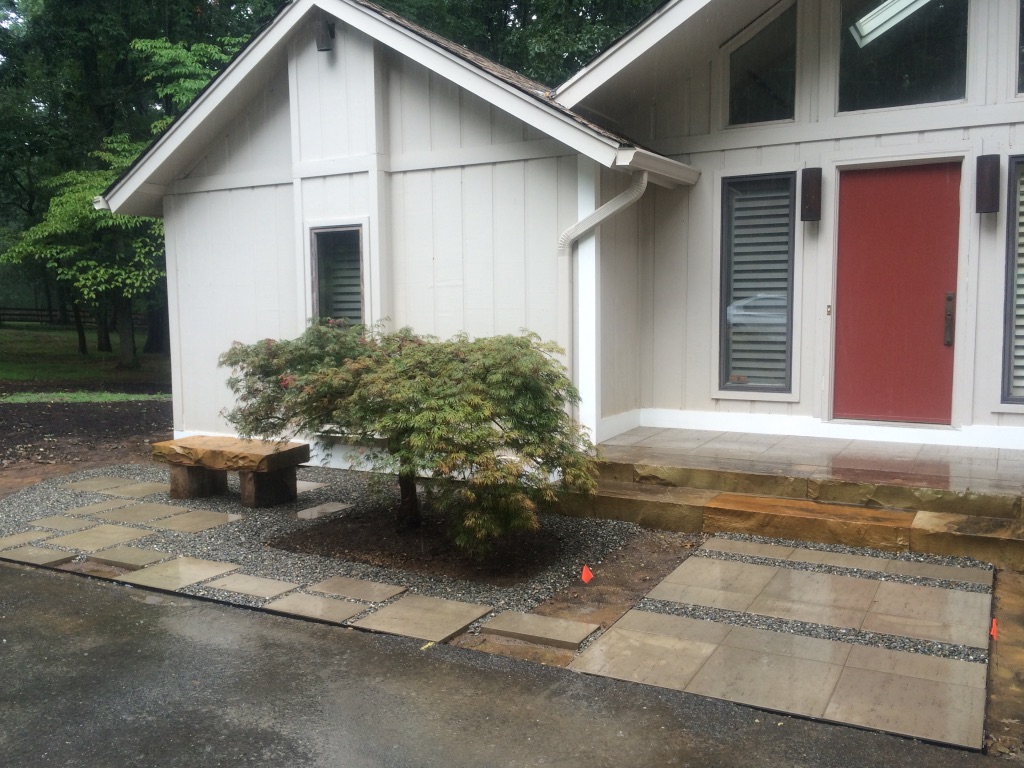
I opened up narrow front walk. Replanted a tree that had grown over part of the front walk. Matched look to the house style. Pruned the Japanese maple to create a healthy, eye-catching statement. Good use of stone and slab - selected matching colors - used the leftover to make a bench - perfect for morning coffee to view the other side of the garden.
Before:

Afters:
Opened up walkway to facilitate egress. Pruned up weeping cherry and transformed front lawn to all-planted/designed garden with walkways throughout the space - creating a sense of adventure and destination - despite a “small” space.
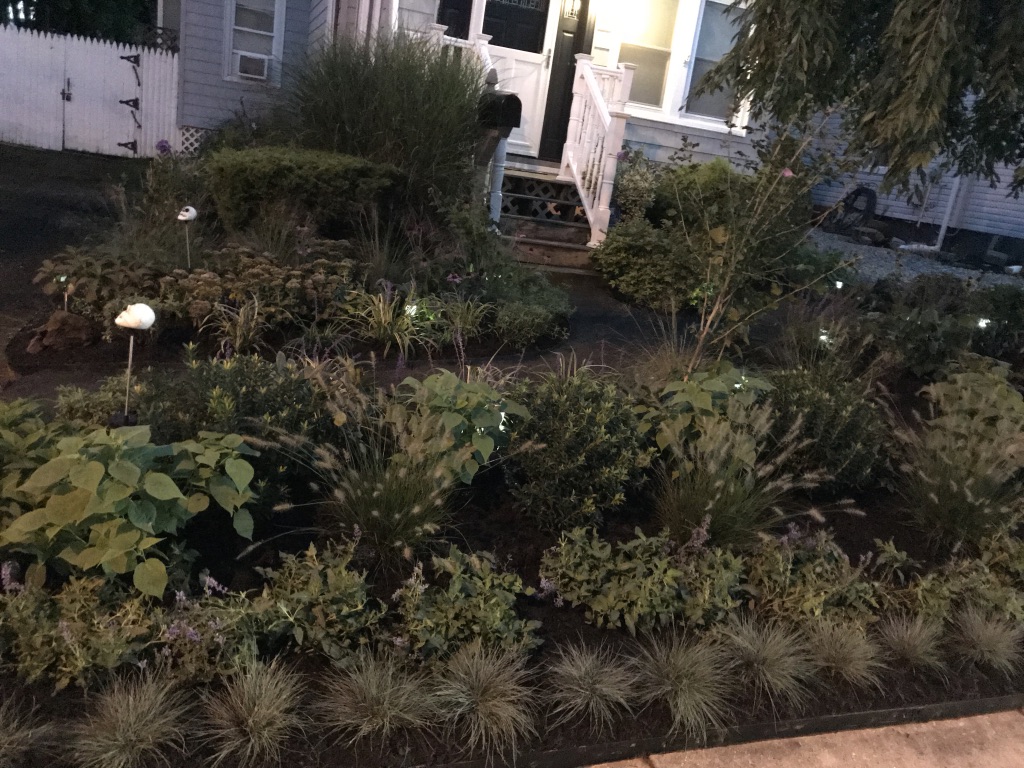
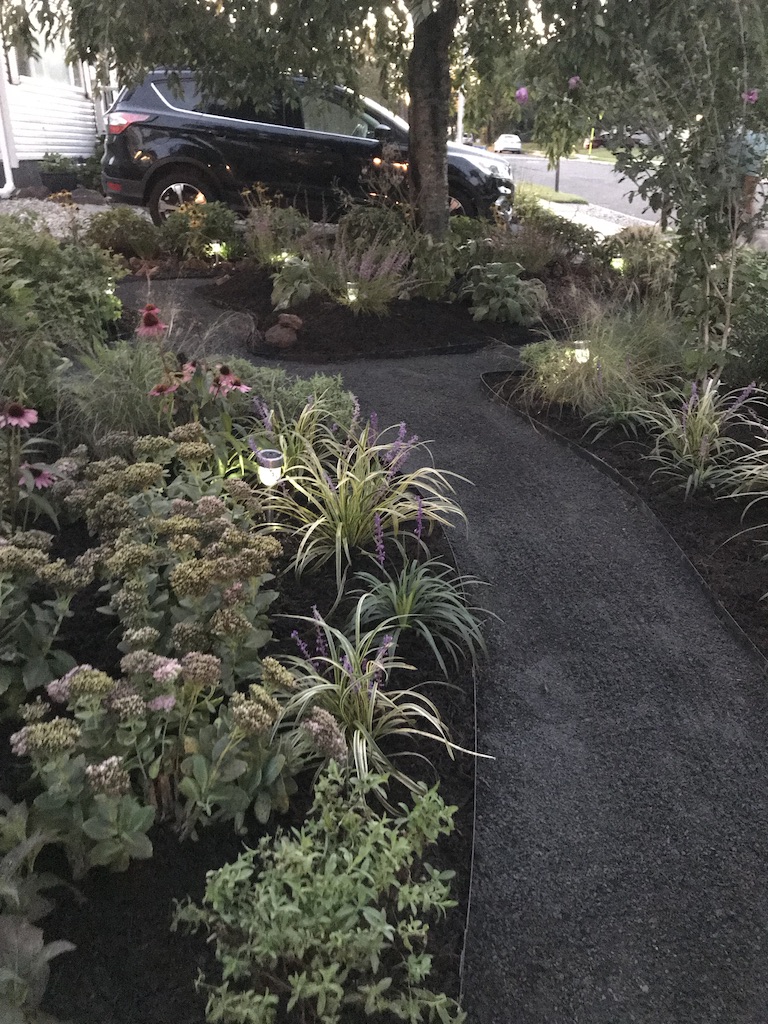
Before:
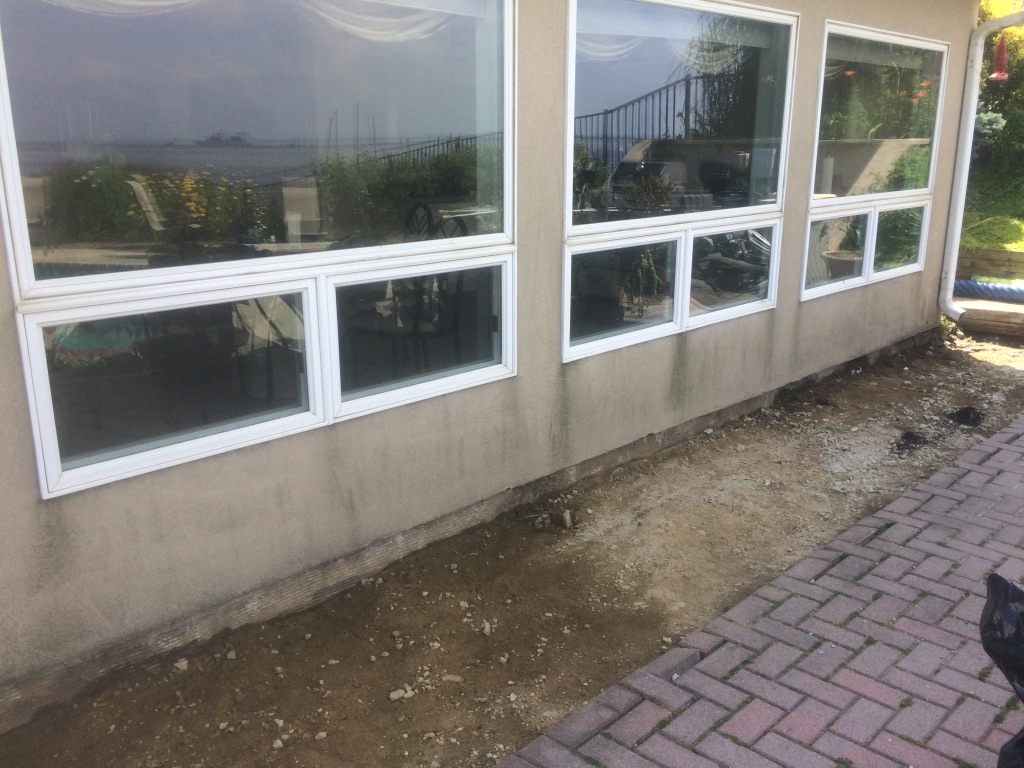
After:
Not quite Before: (I neglected to take the photo of the Before with it’s mash of gnarly vines and giant yuccas and echhh). This was after that plant material was removed or re-planted elsewhere and I shaped the topography of the bed Up to create more visual and space.
This is truly an all-season garden room - a welcoming first impression. This will be the first full year of the design. I’m so looking forward to seeing it unfold it’s seasonal splendor…
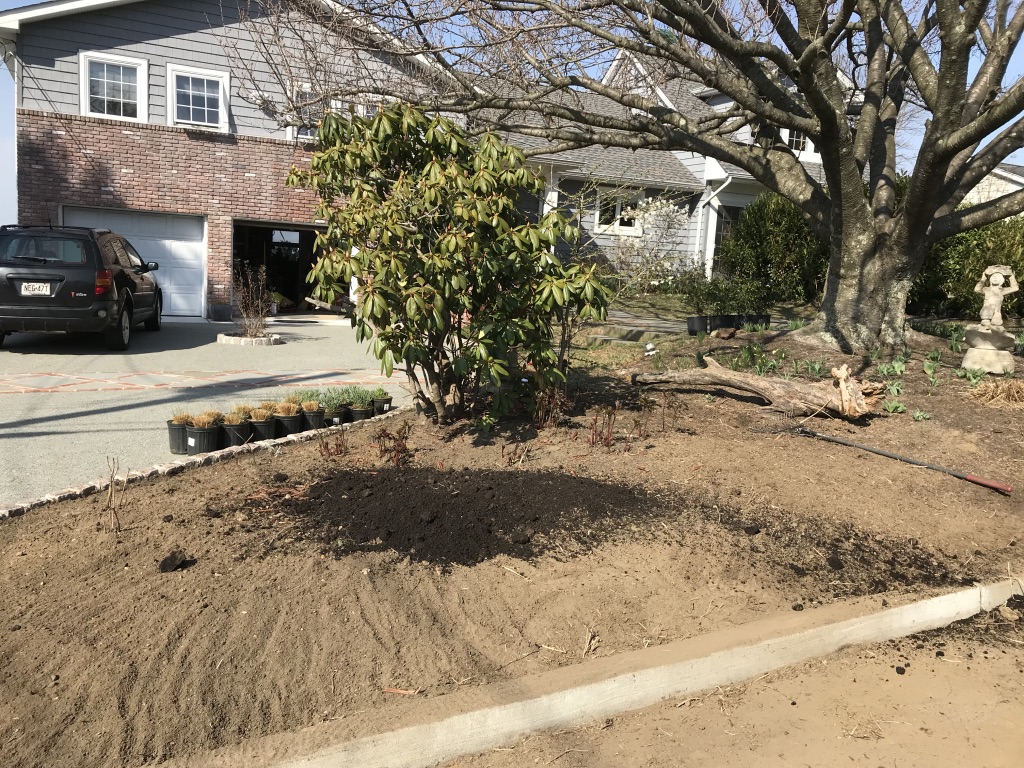

Later in the spring:
 and in the autumn - with the combination of the heart-stopping ornamental pink Muhly grasses and the ‘Little Lamb’ pink & white hydrangeas.
and in the autumn - with the combination of the heart-stopping ornamental pink Muhly grasses and the ‘Little Lamb’ pink & white hydrangeas.

I always design in a bit of a garden folly or something charming that is not, traditionally speaking, a garden item. I showed a few examples:
This is the "Alice in Wonderland" garden I created some years back when my client received an Alice statue from her granddaughter who was grown up - and moving away. I took out all the elements that were in the garden bed, determined the boxwoods as a stage backdrop - and clean look (and deer resistant), mounded up the two spots for the rabbit topiaries that flank Alice. I planted white liriope around the base of Alice - kind of a white petticoat! Ditto for fronting the rabbit stage. In the spring there are lots of white allium seemingly floating there. We also decorate for the holidays with white pumpkins or gold balls...

 This is a charming railroad garden - a kind of working fairy garden.
This is a charming railroad garden - a kind of working fairy garden.
 Checkerboard parking courts with turf and white marble host the Four Seasons: no, not the singing group! These are adorable cherubs who hail from Kent. My client wisely purchased these a few years ago at the annual NYBG Antique and Garden Show. There are sooo sweet.
Checkerboard parking courts with turf and white marble host the Four Seasons: no, not the singing group! These are adorable cherubs who hail from Kent. My client wisely purchased these a few years ago at the annual NYBG Antique and Garden Show. There are sooo sweet.
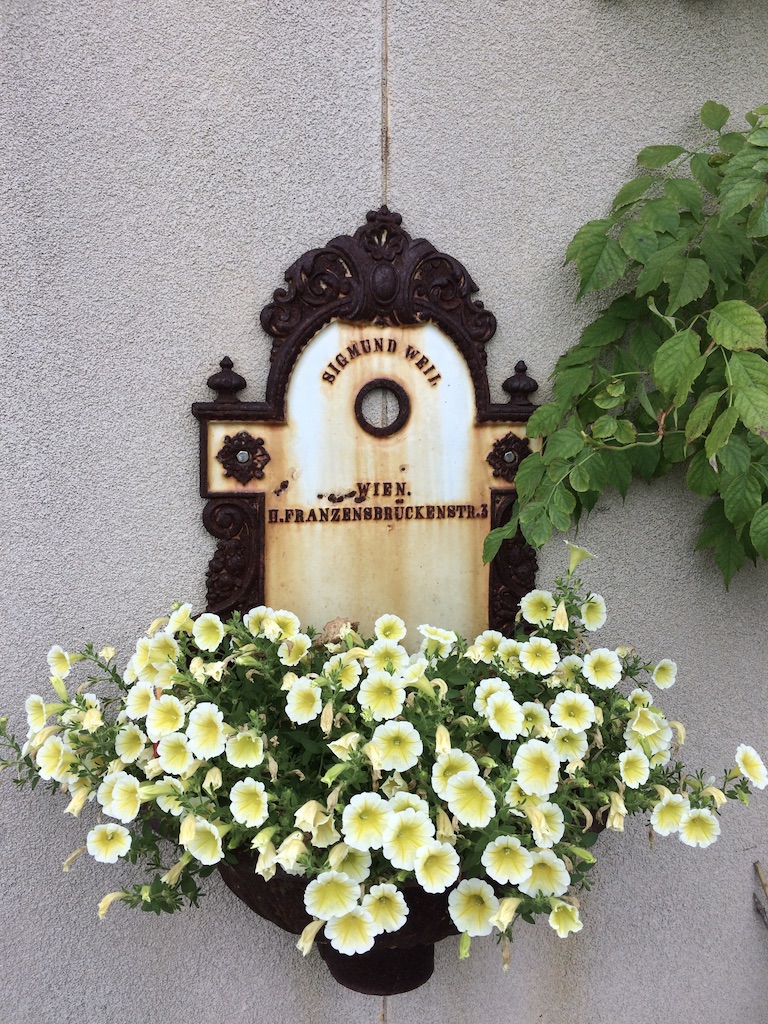 From a beloved street fountain rescued after WW2, to
From a beloved street fountain rescued after WW2, to
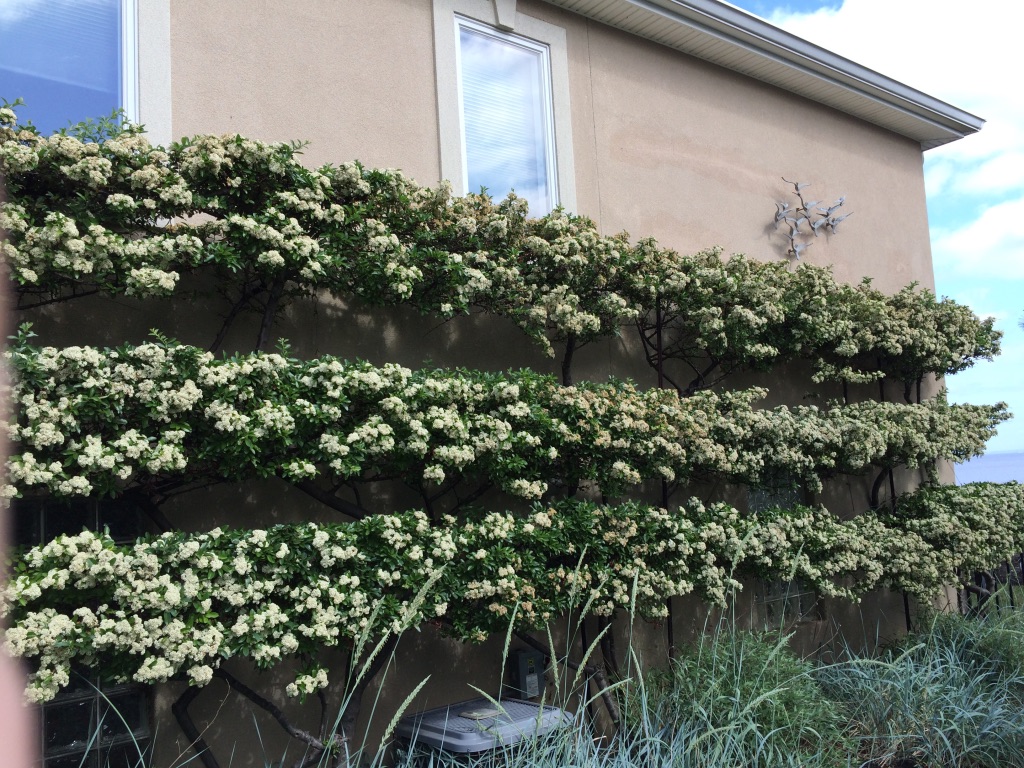 a much-loved and nurtured espalier - that despite being a very strong pyracantha - Superstorm Sandy did her harm. We brought it back with lots of TLC. It’s a neighborhood showstopper. The client lights this living art so day or night - it’s fabulous. Underneath, I designed seasonal plantings to highlight the changing look of the espalier: Dallas Blue ornamental grass and purple / dark blue caryopteris. In the spring, the espalier is aflutter with lots of white blooms. In the autumn, the orange berries complement the blues and purple fronting the garden art.
a much-loved and nurtured espalier - that despite being a very strong pyracantha - Superstorm Sandy did her harm. We brought it back with lots of TLC. It’s a neighborhood showstopper. The client lights this living art so day or night - it’s fabulous. Underneath, I designed seasonal plantings to highlight the changing look of the espalier: Dallas Blue ornamental grass and purple / dark blue caryopteris. In the spring, the espalier is aflutter with lots of white blooms. In the autumn, the orange berries complement the blues and purple fronting the garden art.
I saw this at a recent NYBG lecture: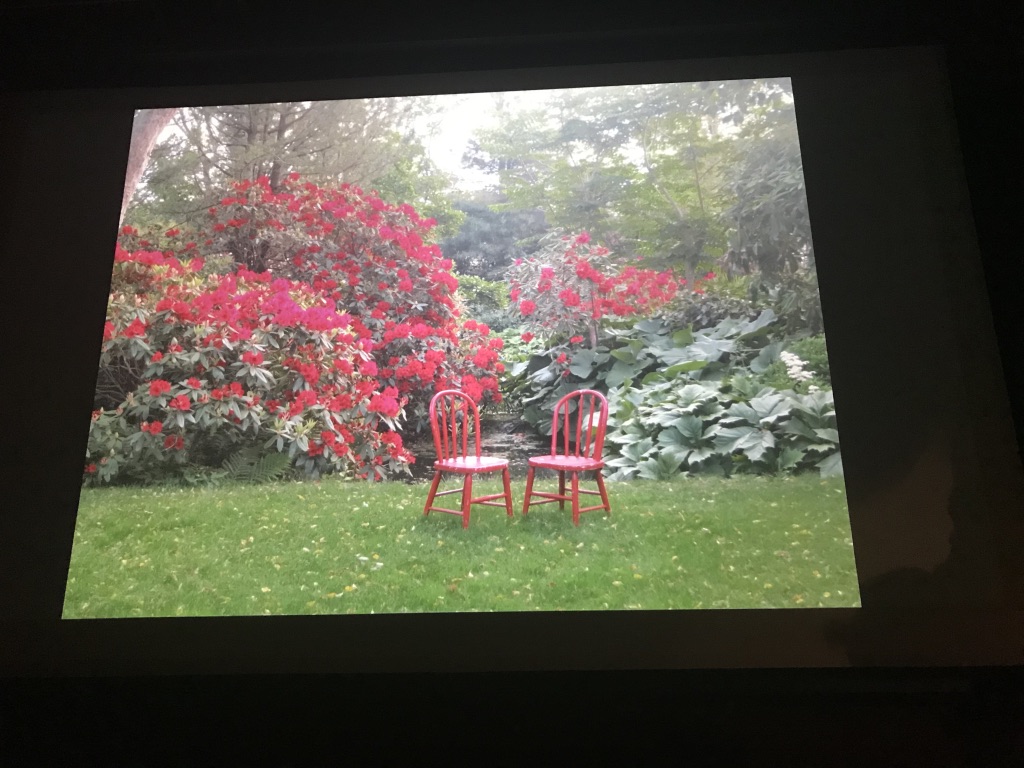
I love the use of the cherry red chairs to amplify the red blooms at John Gwynn’s Sakonnet garden.
These accessories caught my eye at the recent Architectural Digest Show -- lots of style and character.

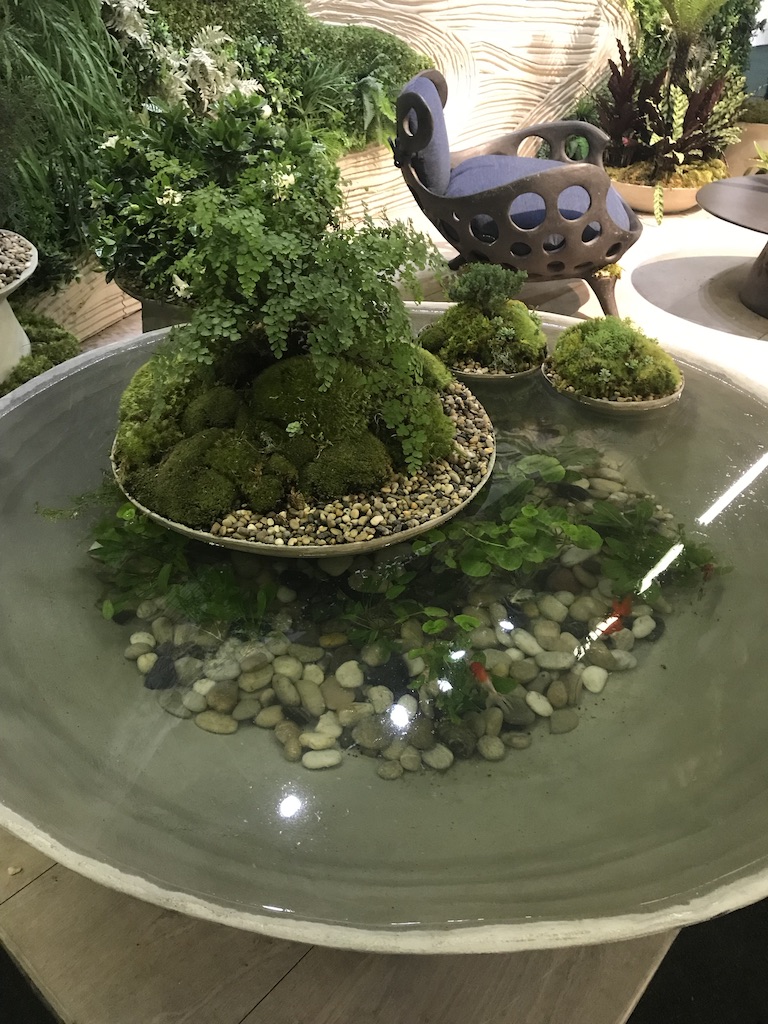

Opiary’s designs offered a compelling take on classic containers and water garden.
In summary, here are a few points to help you create your garden:

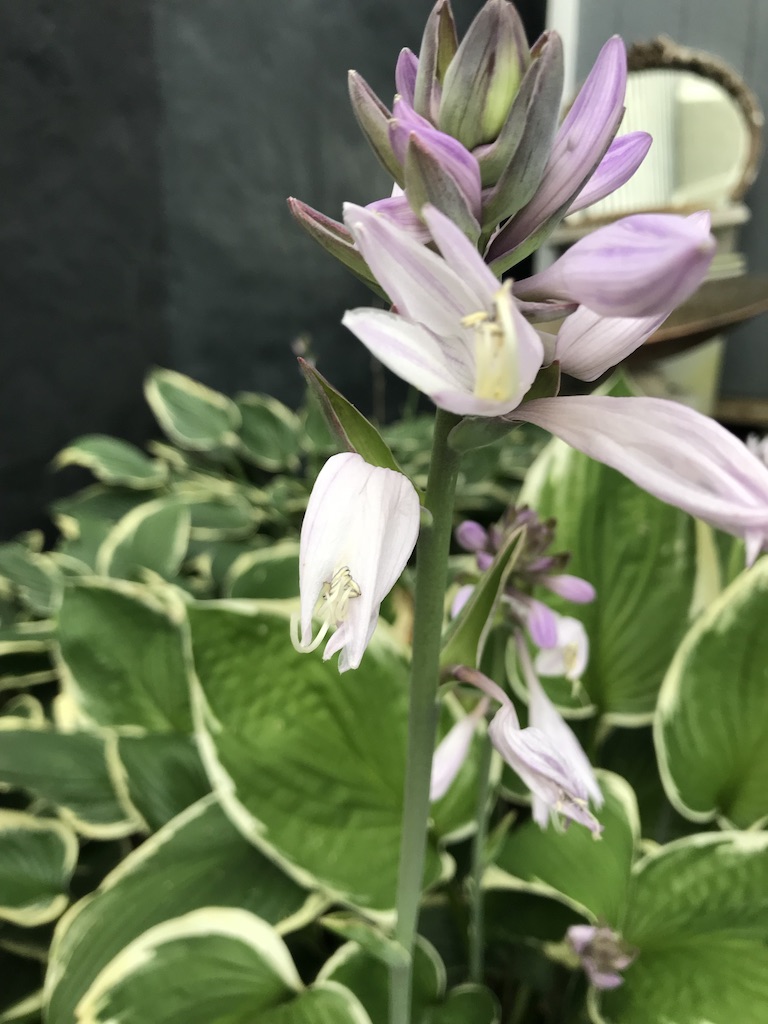
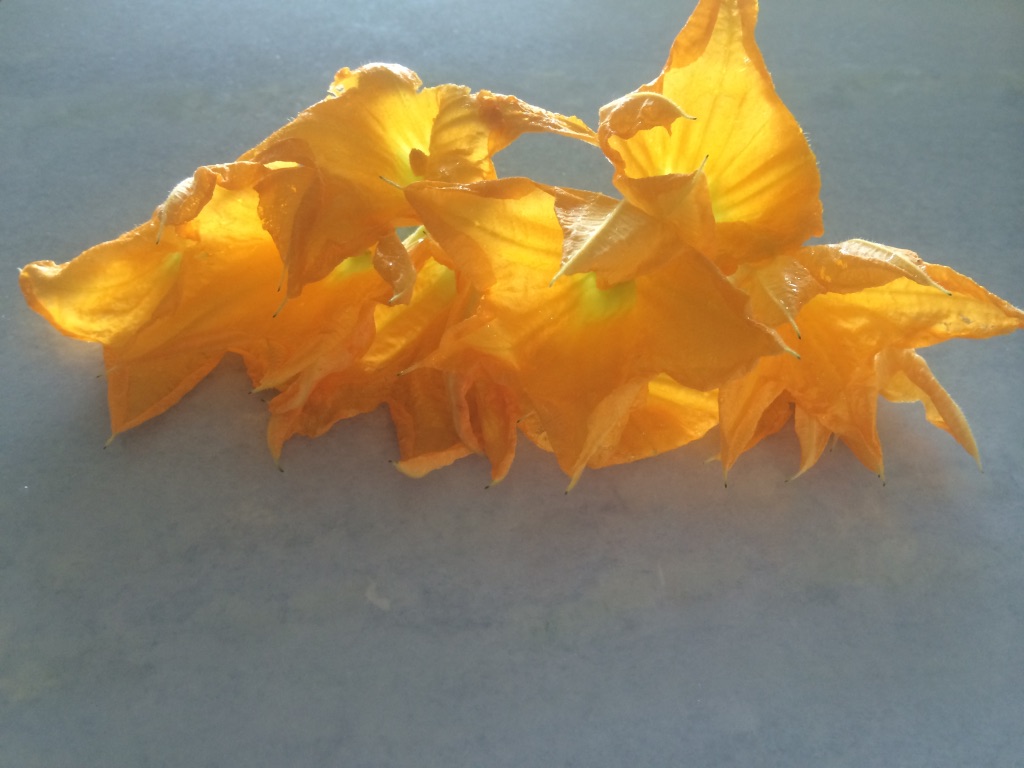

After the talk, I was privileged to escort the first group of Garden Volunteers around the Strauss mansion. The Strauss recently received a grant that is sorely needed to do some very-much needed repairs on the building. Work has started already. And the gardens, too, need some TLC. Therefore, we reached out and asked garden sprites in attendance and those interested in working the gardens to sign up. Ten committed at the Spring Into Gardening Talk! Woohoo!
How to feed the plants with H20 can be accomplished in myriad ways.
Watering Tips:
- Watering Can
- Soaker hoses
- Rain Barrel
- Irrigation system * (Lots of discussion on this element. Most systems waste water.)
- Water Soil – not plants
- Water deeply to encourage deep root growth 1x a week
- Consider wind and humidity
- Water in morning or early evening – no burning
Befores:
After:
I opened up narrow front walk. Replanted a tree that had grown over part of the front walk. Matched look to the house style. Pruned the Japanese maple to create a healthy, eye-catching statement. Good use of stone and slab - selected matching colors - used the leftover to make a bench - perfect for morning coffee to view the other side of the garden.
Before:
Afters:
Opened up walkway to facilitate egress. Pruned up weeping cherry and transformed front lawn to all-planted/designed garden with walkways throughout the space - creating a sense of adventure and destination - despite a “small” space.
Before:
After:
Not quite Before: (I neglected to take the photo of the Before with it’s mash of gnarly vines and giant yuccas and echhh). This was after that plant material was removed or re-planted elsewhere and I shaped the topography of the bed Up to create more visual and space.
This is truly an all-season garden room - a welcoming first impression. This will be the first full year of the design. I’m so looking forward to seeing it unfold it’s seasonal splendor…
Later in the spring:
I always design in a bit of a garden folly or something charming that is not, traditionally speaking, a garden item. I showed a few examples:
This is the "Alice in Wonderland" garden I created some years back when my client received an Alice statue from her granddaughter who was grown up - and moving away. I took out all the elements that were in the garden bed, determined the boxwoods as a stage backdrop - and clean look (and deer resistant), mounded up the two spots for the rabbit topiaries that flank Alice. I planted white liriope around the base of Alice - kind of a white petticoat! Ditto for fronting the rabbit stage. In the spring there are lots of white allium seemingly floating there. We also decorate for the holidays with white pumpkins or gold balls...
I saw this at a recent NYBG lecture:
I love the use of the cherry red chairs to amplify the red blooms at John Gwynn’s Sakonnet garden.
These accessories caught my eye at the recent Architectural Digest Show -- lots of style and character.
Opiary’s designs offered a compelling take on classic containers and water garden.
In summary, here are a few points to help you create your garden:
- Garden Plan - Will it be used for Children, Food, Privacy, Flowers, Wildlife, Fragrance
- Site Analysis - Sun, Shade, Water, Pets, Wildlife, Zone, Soil Type, Size
- Style - Formal, Themed, Seasonal, Cultural
- Plant Selection - Trees, Shrubs, Perennials, Herbs, Vegetables (Foodscaping)
- Hardscape - Including Containers, Raised Beds
- Establish a Budget - Execute Garden Rooms according to Schedule and Budget
| Every good garden design tells a story. What will your garden story be? |
After I saw that I forgot to bring my garden shoes, and I just couldn’t walk in my Italian, kitten-heeled mules - Mother lent me her flats - and unbeknownst to me at the time - proceeded to walk to her car with my nephew. Barefoot!
Our garden sprites/garden gurus - were enthusiastic to get going and work their magic in the Strauss garden rooms. We have our work cut out for us…
Further, we are implementing a Garden Designers Showcase. Area garden designers and landscapers can sign on to transform a garden room there. So far, me/Duchess Designs, Nancy from In the Garden, and next year for Sickles - have committed. We’ll work the gardens this year and showcase in 2020. It will be a challenging and uplifting project for all.
There’s also a twist of the story here. As part of one of the NYBG Garden Design classes, we had to design a garden for a public place. I chose the Strauss Mansion. I researched the Victorian Gardens there and updated the look. I just have to find the garden design layout. Curious, isn’t it? It’s fate, I believe…
Back on the Strauss’ fabulous/soon-to-be-renovated wrap-around porch, the Lynn(e)s surprised and delighted me with a bouquet of fantastic flowers - from In the Garden!

Thank you soooo much. The bouquet is still giving bloom-love!
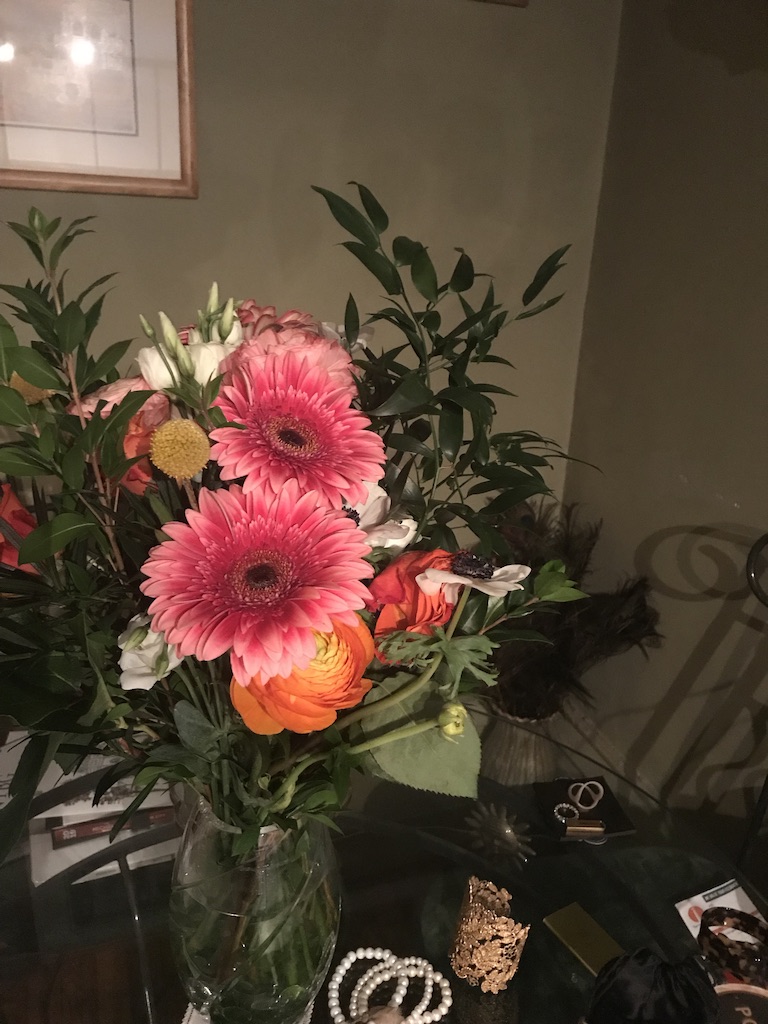

Thank you, Sickles and In The Garden for providing the value-added coupons. The guests can jump-start their spring garden purchases!
To the right is the sign up sheet for the Garden Volunteers -- the excitement is palpable. It will be a terrific program - increasing not only the beauty of the Strauss but also Volunteers - who can consider the Strauss their own yard - which is especially nice for those who don’t have a yard of their own - but also will create a green community - a sense of a shared passion and friendship. Cheers to more of that.
Our garden sprites/garden gurus - were enthusiastic to get going and work their magic in the Strauss garden rooms. We have our work cut out for us…
Further, we are implementing a Garden Designers Showcase. Area garden designers and landscapers can sign on to transform a garden room there. So far, me/Duchess Designs, Nancy from In the Garden, and next year for Sickles - have committed. We’ll work the gardens this year and showcase in 2020. It will be a challenging and uplifting project for all.
There’s also a twist of the story here. As part of one of the NYBG Garden Design classes, we had to design a garden for a public place. I chose the Strauss Mansion. I researched the Victorian Gardens there and updated the look. I just have to find the garden design layout. Curious, isn’t it? It’s fate, I believe…
Back on the Strauss’ fabulous/soon-to-be-renovated wrap-around porch, the Lynn(e)s surprised and delighted me with a bouquet of fantastic flowers - from In the Garden!
Thank you soooo much. The bouquet is still giving bloom-love!
| Lynn Fylak, president AHHS & Spring Garden Talk guest - just moved from Brooklyn |
Thank you, Sickles and In The Garden for providing the value-added coupons. The guests can jump-start their spring garden purchases!
To the right is the sign up sheet for the Garden Volunteers -- the excitement is palpable. It will be a terrific program - increasing not only the beauty of the Strauss but also Volunteers - who can consider the Strauss their own yard - which is especially nice for those who don’t have a yard of their own - but also will create a green community - a sense of a shared passion and friendship. Cheers to more of that.
Then it was on to our home a little celebratory “green” cocktail party. Cheers to more of that too. I’ll share those images shortly.
Thank you. Here’s to a glamorous spring garden. Let me know if I can help you with spring gardening and/or spring tablescapes.
Thank you. Here’s to a glamorous spring garden. Let me know if I can help you with spring gardening and/or spring tablescapes.
| Cocktail captured by the talented photographer, Angie Lambert |

